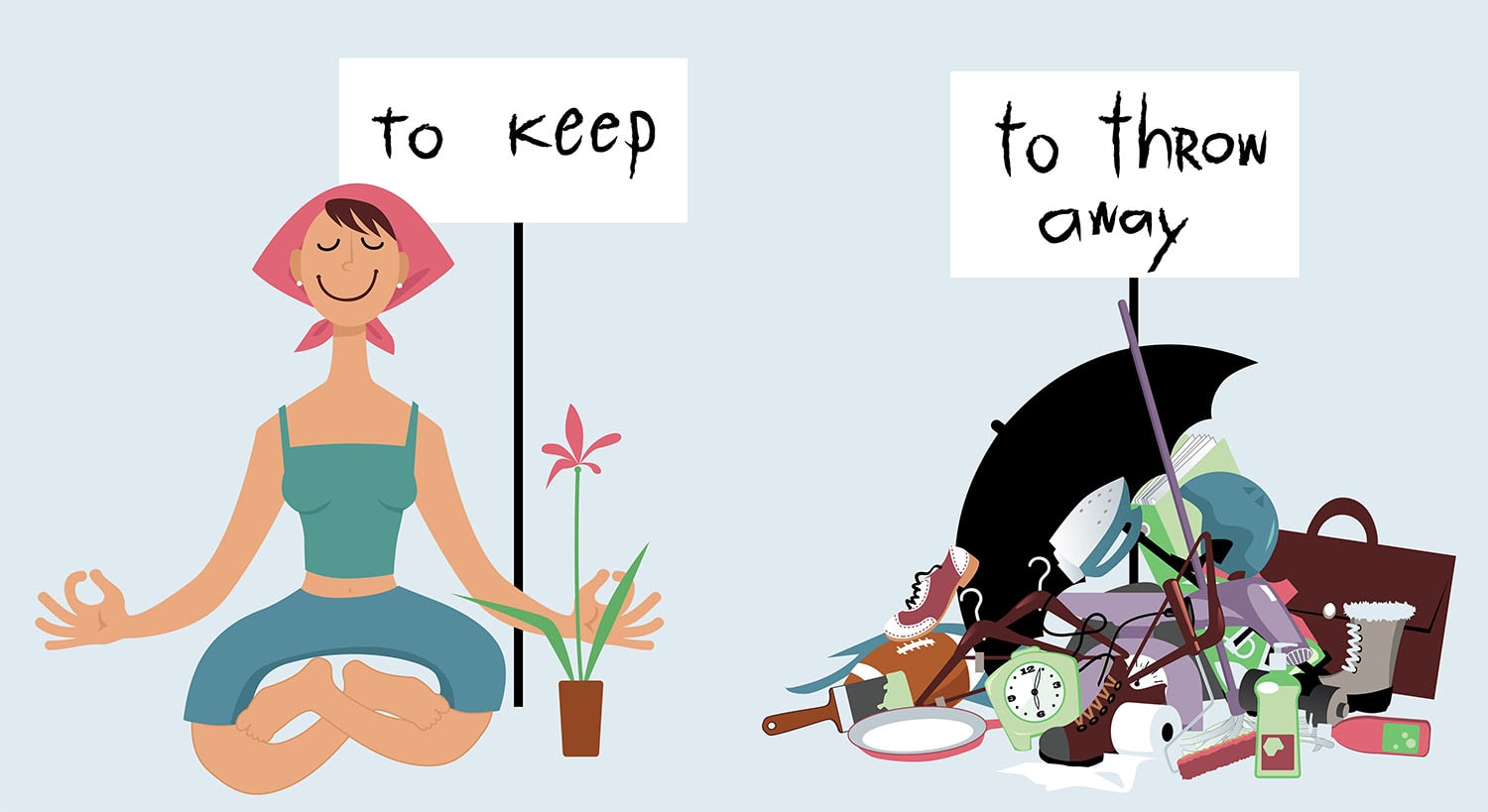 The concept of ‘Minimalism’ is often confused with minimalistic design, where one usually conjures images of bare rooms, white walls, a couch or sofa, maybe a chair. Thrown into this mix, perhaps a single, sole accent picture-frame displayed on a naked, lonely wall. The elements – all serene, calm, bare. In modern times, any design characterized by scarcity is termed minimalistic. However, the real essence of minimalism is a lifestyle choice.
The concept of ‘Minimalism’ is often confused with minimalistic design, where one usually conjures images of bare rooms, white walls, a couch or sofa, maybe a chair. Thrown into this mix, perhaps a single, sole accent picture-frame displayed on a naked, lonely wall. The elements – all serene, calm, bare. In modern times, any design characterized by scarcity is termed minimalistic. However, the real essence of minimalism is a lifestyle choice.
Modern Minimalism is the practice of awareness and intention regarding your belongings, time and energy. Someone who considers themselves a minimalist, would most likely call it an everyday practice, because you become a minimalist only through practice and a certain amount of discipline. There are no numeric rules or décor guidelines. The goal of minimalism is not to achieve perfection, but to prioritize and live in a way that feels full and authentic – the mantra being ‘Less is More’.
Minimalism involves a mindset shift. It emphasizes prioritization. So, you start by decluttering your home, your possessions. You streamline your schedules and learn to prioritize even your relationships. Minimalism is the exact opposite of what we have been told via advertisements, the media and society. While consumerism has a grip on every aspect of our lives, we do realize now that most of our possessions do not add any real value.
Pareto’s Principle of 80/20 applies. We understand how 80% of the joy or happiness we experience in life comes from the 20% of the things we own! We all have our favorite chair, mug, shoes, bags that we like and are drawn to, every single time. All others are secondary. Given a choice, we will always pick them first over any of the others. So automatically, the rest is just surplus. What is the point of the other 8 mugs in your kitchen when you invariably pick only your favorite every single time? We need the 80/20 rule to filter out the unnecessary baggage we tend to carry.
Another brilliant way to simplify your life and get rid of excess is the 90-day rule. This one’s easy. If you have any item, could be a pair of jeans or those comfy loafers you bought on an impulse, you need to ask yourself if you’ve used these in the last 90 days. If not, ask if you will use them in the next 90 days. Be honest, and if you are unsure, it’s time to let the stuff go.
Minimalism sounds trendy, and it may well be a trend. However, the philosophy of minimalism is timeless. Before it was a lifestyle, the same principles existed under other concepts for thousands of years. Stoics and Buddhists have been living a minimalistic lifestyle that feels like forever. The practice of minimalism didn’t become mainstream until the 20th century, when writers, photographers, architects, and artists embraced the idea. As with all movements, minimalism has changed over time, but thanks to Marie Kondo and the advent of tiny homes, the practice is seeing a resurgence around the world.
Minimalism has recently become a growing phenomenon and an international trend as the world we live in has been changing dramatically. The Pandemic economy, with uncertainties about the future, reduction in the workforce, tighter budgets and low incomes, has forced us to identify with what is really essential, and all the things we can certainly live without. During the pandemic, minimalism became the de facto lifestyle for a huge percentage of the population globally.
We often brush off minimalism as something suitable only for the very disciplined or principled, or an unrealistic vision exclusively for those living on the fringes of society. Immaterial of your overall view, minimalism is growing and slowing oozing into the pores of mainstream skin. Today, its appeal makes sense considering the context of overconsumption, recession and environmental degradation around us. Minimalism is so much more than the number of items you own. It is entrenched with the main themes of time, experience and life.
The Power of Minimalism is far reaching. First and foremost, minimalism is a paradigm shift. Its greatest effect is encouraging people to think, perceive and behave in a new direction – towards less materialism and more positive life experiences. It redefines the nature of life, every day and overall. We are creatures attached to things. Society teaches us to attach our status and reputation to the items we own – luxury brands, latest gadgets, or fashionable labels. Minimalism steers us away from this mindset and mentality. It is a journey in search of the essentials of living a happy and meaningful life. By taking away the clutter and excess, the minimalist is left with fewer distractions of overconsumption and debt.
Minimalistic living is choosing to live life with a great purpose, choosing to live with fewer resources and yet being satisfied. It’s about letting go of things that aren’t needed and not purchasing in excess of one’s needs. A minimalist lifestyle is not radical, rather it’s optimal. In short, Minimalism is all about Choosing to:
- Have experiences rather than things;
- Live a life of freedom rather than following a script;
- Live with less and choosing to live light
- Buy what we need and not what we want
- Find time for things that matter such as pursuing hobbies and indulging in relaxing activities.
Remember, a minimalist lifestyle is more a process than a simple decision. Minimalism is not a lack of something but simply the perfect amount of everything. Thomas Jefferson had wisely said, “Every generation needs a new revolution.” Maybe minimalism is ours. I believe, minimalists are enlightened individuals who want to get the most out of life. They have depth of heart, heightened awareness, soul and spirit and a great deal of courage too. And maybe, truly, ‘A life without is better than a life with’!
- Walk Away! - 20 April2024
- Brain Power - 6 April2024
- Celebrating Our Iranian Brethren! - 16 March2024

Very nice and useful article.
Thanks Veera